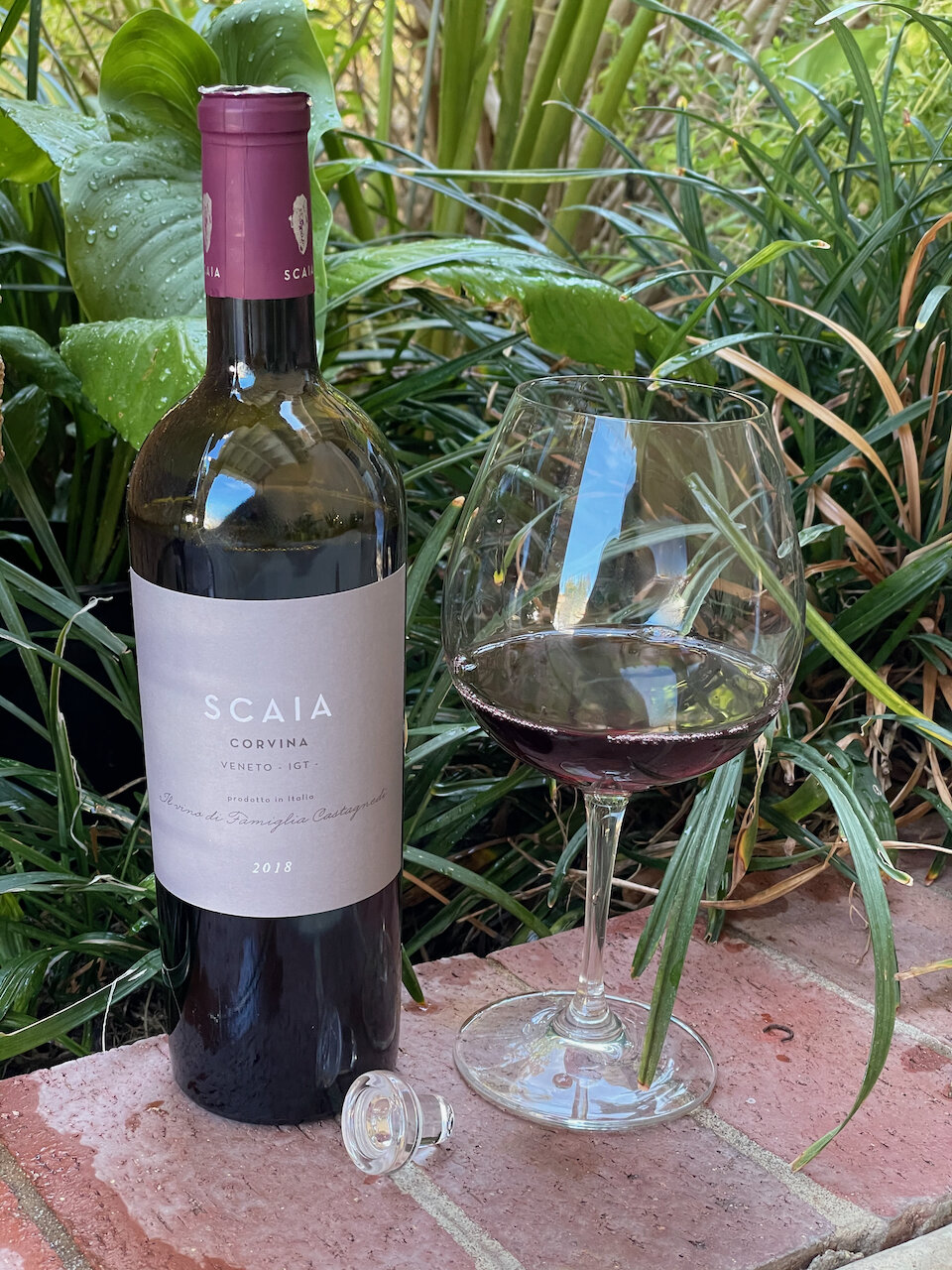2018 Scaia Corvina ($14)
The Scaia project was launched by Tenauta Sant’Antonio in 2006 with the aim of creating wines with a modern style outside the restrictions by Italy’s denomination system. And, this is a fine example of working just outside of those restrictions.
The grapes for this wine are from the eastern part of the Valpolicella region in Italy. But, to be labelled as a Valpolicella, it would need to be comprised of 45 to 95% Corvina. This wine is 100% Corvina, so does not meet the law for a Valpolicella and so it’s labelled as a Corvina varietal.
This Scaia Corvina was fermented and aged in stainless steel tanks to retain the bright fruit flavors. It underwent Malolactic conversion and then spent six months in the bottle before going to market.
This wine is pale purple in color and very light on the nose with just hints of red fruit aromas. On the palate it remains light with sour cherry flavor, light tannins and nice acidity on the finish.
If you love the cherry flavors of Valpolicella or Chianti, you’ll love this wine. And, at this price, it’s another great fit to be a Behind the Cork™ wine of week. Cheers!
Disclosure of Sample Submission: I received this sample at no cost for review. The opinions expressed are entirely my own.
Samples Provided by Katherine Jarvis, The Jarvis Communication Team


